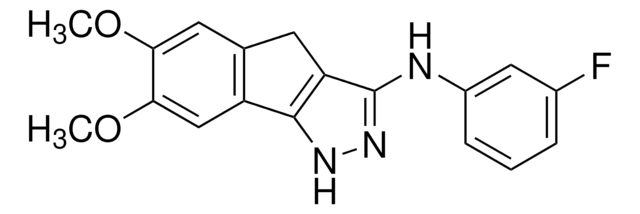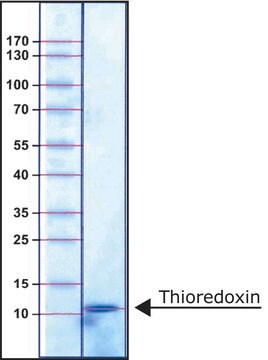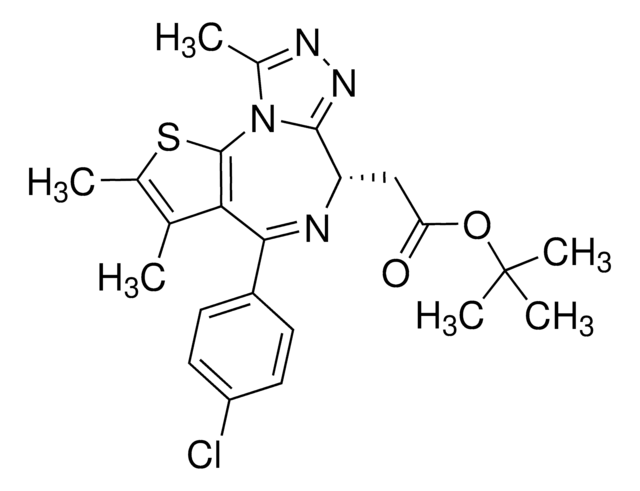SML1555
MS023 hydrochloride
≥98% (HPLC)
別名:
N1-((4-(4-Isopropoxyphenyl)-1H-pyrrol-3-yl)methyl)-N1-methylethane-1,2-diamine hydrochloride, N1-Methyl-N1-[[4-[4-(1-methylethoxy)phenyl]-1H-pyrrol-3-yl]methyl]-1,2-ethanediamine hydrochloride
About This Item
おすすめの製品
品質水準
アッセイ
≥98% (HPLC)
フォーム
powder
保管条件
desiccated
色
white to light brown
溶解性
H2O: 20 mg/mL, clear
保管温度
−20°C
SMILES記法
CN(CCN)CC1=CNC=C1C2=CC=C(OC(C)C)C=C2.[H]Cl
InChI
1S/C17H25N3O.ClH/c1-13(2)21-16-6-4-14(5-7-16)17-11-19-10-15(17)12-20(3)9-8-18;/h4-7,10-11,13,19H,8-9,12,18H2,1-3H3;1H
InChI Key
IEZPALXFXHDDHI-UHFFFAOYSA-N
関連するカテゴリー
生物化学的/生理学的作用
To learn about other SGC chemical probes for epigenetic targets, visit sigma.com/sgc
特徴および利点
その他情報
保管分類コード
11 - Combustible Solids
WGK
WGK 3
引火点(°F)
Not applicable
引火点(℃)
Not applicable
適用法令
試験研究用途を考慮した関連法令を主に挙げております。化学物質以外については、一部の情報のみ提供しています。 製品を安全かつ合法的に使用することは、使用者の義務です。最新情報により修正される場合があります。WEBの反映には時間を要することがあるため、適宜SDSをご参照ください。
Jan Code
SML1555-5MG:
SML1555-25MG:
SML1555-VAR:
SML1555-BULK:
最新バージョンのいずれかを選択してください:
この製品を見ている人はこちらもチェック
ライフサイエンス、有機合成、材料科学、クロマトグラフィー、分析など、あらゆる分野の研究に経験のあるメンバーがおります。.
製品に関するお問い合わせはこちら(テクニカルサービス)








